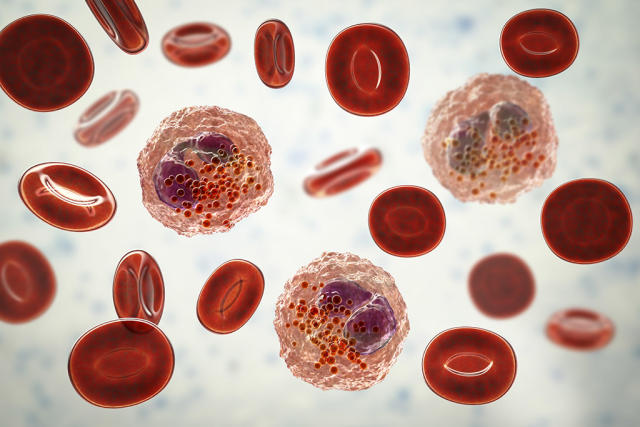Hemophilia

Hemophilia is a rare disorder in which the blood doesn't clot in the typical way because it doesn't have enough blood-clotting proteins (clotting factors).
If you have hemophilia, you might bleed for a longer time after an injury than you would if your blood clotted properly, the condition is typically caused by a hereditary lack of a coagulation factor, most often factor VIII.
Internal bleeding can damage your organs and tissues and be life-threatening.
According to the Centre for Disease Control, Hemophilia is caused by a mutation or change, in one of the genes, that provides instructions for making the clotting factor proteins needed to form a blood clot.
This change or mutation can prevent the clotting protein from working properly or to be missing altogether. These genes are located on the X chromosome.
Also when a person bleeds, the body typically pulls blood cells together to form a clot to stop the bleeding. Clotting factors are proteins in the blood that work with cells known as platelets to form clots.
Hemophilia occurs when a clotting factor is missing or levels of the clotting factor are low.
Signs and symptoms of hemophilia vary, depending on your level of clotting factors. If your clotting factor level is mildly reduced, you might bleed only after surgery or trauma.
If your deficiency is severe, you can bleed easily for seemingly no reason.
Signs and symptoms of spontaneous bleeding include:
Unexplained and excessive bleeding from cuts or injuries, or after surgery or dental work
Many large or deep bruises
Unusual bleeding after vaccinations
Pain, swelling, or tightness in your joints
Blood in your urine or stool
Nosebleeds without a known cause
In infants, unexplained irritability
Types of Hemophilia
The most common type is hemophilia A, associated with a low level of factor 8.
The next most common type is hemophilia B, associated with a low level of factor 9.
Acquired hemophilia, develops in people with no family history of the disorder.
Acquired hemophilia is a variety of conditions that occurs when a person's immune system attacks clotting factor 8 or 9 in the blood. It can be associated with Pregnancy, Autoimmune conditions, and cancer among other factors.
Risk factors
The biggest risk factor for hemophilia is having family members who also have the disorder. Males are much more likely to have hemophilia than females.
Treatment includes regular replacement of the specific clotting factor that is reduced. Newer therapies that don't contain clotting factors also are being used.
BY YVONNE SALESIO
Tags: Cdc Signstv Hemophelia
Related
Share this article
Experienced and versatile writer, dedicated to using my exceptional writing and editing skills to inform and advocate. My work focuses on educating and entertaining readers on a range of topics, with a particular expertise in matters of disability.
View articles

